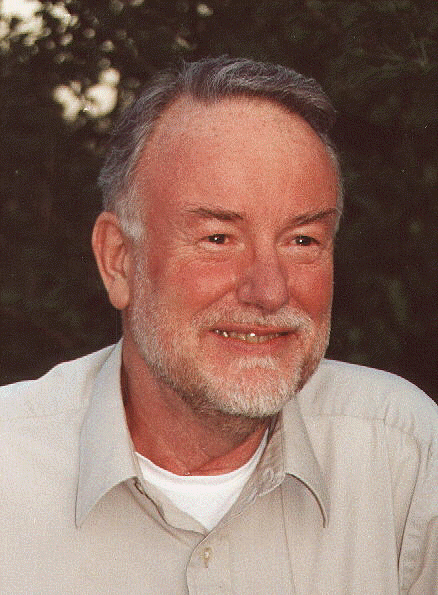
Introduction to Natural Generative Phonology
An example of Natural Generative Phonology
Introduction to Natural Generative Phonology
Natural Generative Phonology (NGP) emerged from a number of papers by Venneman in the early 1970s and is most comprehensively expounded by Hooper in a 1976 book (An Introduction to Natural Generative Phonology).
NGP is a derivational approach which is similar to Generative Phonology introduced by the Sound Pattern of English (SPE). As the title of this school, its proponents do not claim to depart radically from the mainstream of generative phonology. They describe their school as "based in part on transformational generative theory as developed since the mid-1950s". However, NGP is quite radical in its attack on abstractness. The primary arguments of NGP are the true generalization condition, and the no ordering condition. Vennemann had proposed to rule out any underlying form that was not identical to a surface form and prohibit rule ordering.
However, Hooper herself assesses this proposal and states that it goes too far (Hooper, 1976). Consider the following examples:
melody ['mel«
di]
melodic [m«'ladIk]
heretic ['heä«
tIk]
herectical [h«'retIk«l]
A strict constraint on abstractness would
mean that one of the surface forms would have to be chosen as underlying. But,
if the term "underlying form" has any value, the root of each pair of forms
given above should not contain any occurrence of
[«], as this vowel is derived by
reduction from other vowels.
Hooper's solution is to abandon abstract underlying form. She suggests that
within NGP, rules and representations are directly related to surface forms and
that phonological analysis is more concrete and more realistic than in
SPE(Hooper, 1976). In other words, the major claim of NGP is that speakers
construct only generalizations that are surface true.
(Clark, John and Colin Yallop. An Introduction to Phonetics and Phonology. )
There are three rule types. They are phonetically conditioned rules (P-rules), morphophonemic rules (MP-rules), and via rules. They are specified respectively as follows:
A. Phonetically conditioned rules (P-rules)
Phonetically conditioned rules (P-rules) are rules that are specified in purely phonetic terms, that is, phonological features, and phonological boundaries (syllable boundaries, pause boundaries). P-rules are automatic and have no exceptions (e.g., the rule aspirating syllable-initial voiceless stops in English). These rules correspond to the natural processes of natural phonology.
B.Morphophonemic rules (MP-rules)
Morphophonemic rules (MP-rules) refer to morphological or syntactic categories,
to arbitrary lexical categories, or to word or morpheme boundaries. The rule
voicing fricatives in certain English plurals (wife, wives) is an
example of an MP-rule, which contains both lexical and morphological
information: it applies to only a small class of nouns (wife, house,
but not safe, face), and it applies only in the plural.
Via rules are used in NGP to relate pairs of words without deriving them from the same underlying form. Vennemann (1972) suggests that a correct account of the synchronic residue of the Great Vowel Shift of English, for example, is a via rule. Accordingly, ser[i:]ne and ser[ε]nity would not be derived from the same underlying form as proposed in SPE; rather the underlying forms would be essentially identical to the phonetic forms, and the lexical entries for both items would be marked to indicate that they are related to each other by a via rule:
i: ←→ ε
Therefore, it would be possible for an individual speaker to perceive a relationship between serene and serenity, but to fail to see a relationship between obscene and obscenity. In this case, the former pair would be lexically marked as related by the via rule, whereas the latter pair would not.
An example of Natural Generative Phonology
Word final devoicing in German is a classic case of a neutralization process, and it is perfectly acceptable as a process in NGP since it expresses a true generalization --all word final obstruents are voiceless. Let's take a look at following examples:
A.
Ta[k] "day"
B. Ta[g]e
"days"
lei[t]
"sorry"
lei[d]en
"to suffer"
Lo[p]
"praise"
lo[b]en
"to praise"
Rau[p]
"robbery"
Rau[b]en "to rob"
We[k]
"way"
We[g]e
"ways"
Lan[t]
"land"
lan[d]en "to
land"
Grei[s]
"old man"
Grei[z]es "old men"
Ra[t]
"advice"
ra[t]en
"to advise"
Vol[k]
"people"
Vol[k]e
"peoples"
Perisko[p]
"periscope"
Perisko[p]e "periscopes"
Ho[f]
"courtyard"
Hö[f]e
"courtyards"
Ro[s]
"horse"
Ro[s]e
"horses"
Both voiced and voiceless obstruents become voiceless when they occur at word
final position.
(http://www.utexas.edu/courses/linguistics
The linguistic data is from Iggy Roca and Wyn Johnson.
A work
book in phonology.)
The recommend web site
☼Theo Vennemann's web page
--
http://www.theo-vennemann.com
(This page introduces Vennemann's work
and more things
about him. Written in German.)
Asher, R. E. (ed.)(1994). The Encyclopedia of Language and Linguistics. New York: Pergamon.
Chomsky, N, and Morris Halle. (1968). The Sound Pattern of English. New York: Harper and Row.
Clark, John and Colin Yallop. (1995). An Introduction to Phonetics and Phonology. Oxford: Blackwall.
Hooper, J.B. (1976). An Introduction to Natural Generative Phonology. New York: Academic Press.
Roca, I and Wyn Johoson. (1999). A work book in phonology. Oxford: Blackwell.
Vennemann, Theo (1972). Phonological uniqueness in natural generative grammar. Glossa 6: 105-61.
Vennemann, Theo (1974). Phonological concreteness in natural generative grammar. In: Shuy R., Bailey C-J N (eds.) Toward Tomorrow’s Linguistics. Washington D. C.: Georgetown University Press.